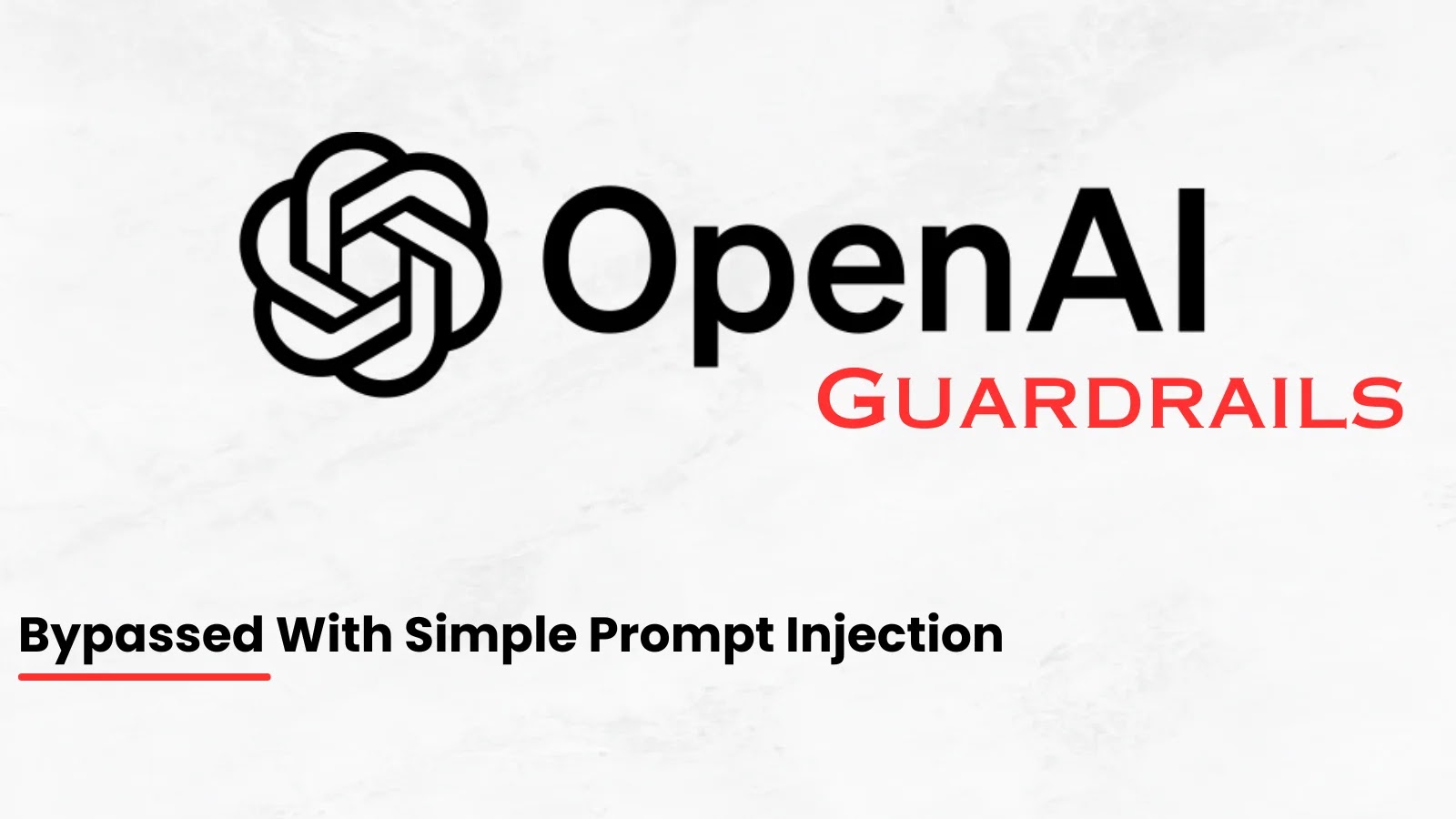
Hackers Can Bypass OpenAI Guardrails Framework Using a Simple Prompt Injection Technique
The Disarming Simplicity: Prompt Injection Bypasses OpenAI Guardrails
The promise of enhanced AI safety through sophisticated guardrail frameworks is a critical defense line in the rapidly evolving landscape of artificial intelligence. Yet, just as swiftly as these defenses emerge, dedicated researchers and malicious actors alike seek to test their resilience. A recent disclosure has sent ripples through the AI security community: OpenAI’s recently launched Guardrails framework, designed to detect harmful AI behaviors, has been effectively circumvented using remarkably basic prompt injection techniques. This revelation, first highlighted by experts at HiddenLayer, underscores the ongoing challenge of securing large language models (LLMs) against ingenious manipulation.
Understanding OpenAI’s Guardrails Framework
OpenAI introduced its Guardrails framework with the explicit goal of bolstering AI safety. Launched on October 6, 2025, the framework leverages the power of LLMs themselves to act as a protective layer. Its primary function is to scrutinize both user inputs and AI outputs for potential risks, including sophisticated jailbreaking attempts and direct prompt injections. The intention is clear: to ensure AI models adhere to ethical guidelines and prevent them from generating or processing harmful, biased, or otherwise undesirable content. It represents a significant step towards creating more responsible and secure AI systems, aiming to build trust and mitigate misuse.
The Vulnerability: Guardrails Succumb to Prompt Injection
Despite its advanced design, the OpenAI Guardrails framework proved vulnerable to a fundamental flaw: prompt injection. Researchers from HiddenLayer demonstrated that even with the Guardrails in place, they could craft malicious prompts that bypassed the intended safety mechanisms. This isn’t an exotic exploit; it’s a testament to the inherent difficulty in precisely controlling how LLMs interpret and prioritize instructions when faced with conflicting directives within a single prompt. The core issue lies in the LLM’s capacity to be “persuaded” to ignore its safety instructions if the injection is artfully subtle or sufficiently manipulative. This vulnerability allows an attacker to dictate the model’s behavior, potentially leading to the generation of harmful content, exposure of sensitive data, or deviation from intended operational parameters.
Implications for AI Security and Development
The successful bypass of OpenAI’s Guardrails using simple prompt injection techniques has significant implications. For developers, it highlights that even self-referential AI safety layers are not foolproof. It underscores the continuous need for multi-layered security approaches that extend beyond the LLM itself, incorporating robust input validation, output filtering, and even human oversight. For organizations deploying AI, this discovery means that relying solely on built-in guardrails is insufficient. The risk of AI models being exploited to generate misinformation, perform unauthorized actions, or exhibit unsafe behaviors remains high. Furthermore, it accelerates the cat-and-mouse game between AI security developers and those seeking to exploit these systems, necessitating rapid iteration and innovation in defensive strategies. While a specific CVE ID for this particular bypass isn’t yet broadly assigned or publicized, the broader category of prompt injection vulnerabilities is well-documented and represents an ongoing threat to LLM-powered applications. Recognizing the absence of a direct CVE for this specific instance, we emphasize that prompt injection is a known attack vector.
Remediation Actions for Robust AI Safety
Addressing the prompt injection vulnerability in AI guardrails requires a multi-faceted approach. Here are actionable steps organizations and developers can take to enhance their AI safety posture:
- Input Validation and Filtering: Implement rigorous pre-processing of all user inputs before they reach the LLM. This includes sanitization, keyword filtering, and structural analysis to detect and neutralize known prompt injection patterns.
- Output Post-Processing: After the LLM generates a response, conduct thorough post-processing to filter out any potentially harmful, biased, or injected content before it reaches the end-user.
- Adversarial Testing: Continuously perform advanced adversarial testing, commonly known as “red teaming,” to proactively identify new prompt injection techniques and strengthen defenses.
- Regular Guardrail Updates: Stay informed about research and updates from AI providers like OpenAI regarding their guardrail frameworks. Rapidly deploy patches and improved versions as they become available.
- Human-in-the-Loop Monitoring: For critical applications, incorporate human oversight or moderation for initial interactions or when the AI flags uncertain outputs. This provides an additional layer of security.
- Ensemble Defensive Models: Employ multiple smaller, specialized LLMs or rule-based systems to act as independent guardrails, making it harder for a single injection to compromise the entire defense.
- Principle of Least Privilege: Design AI applications with minimal permissions and access to external systems, limiting the potential damage if an injection is successful.
Tools for Detecting and Mitigating Prompt Injection
Various tools and methodologies are emerging to help combat prompt injection. While the field is still evolving, here are some categories and examples:
| Tool Category | Purpose | Link (Example/Concept) |
|---|---|---|
| Content Moderation APIs | API services to filter out harmful user inputs and AI outputs. | OpenAI Moderation API |
| Threat Intelligence Platforms | Provide intelligence on new prompt injection techniques and vulnerabilities. | (General cybersecurity threat feeds) |
| Red Teaming Frameworks | Structured methodologies and tools for adversarial testing of LLMs. | OWASP LLM Attack Surface Map (Conceptual guide) |
| Input Sanitization Libraries | Libraries for filtering and cleaning user-provided text inputs. | (Standard programming language libraries, e.g., Python’s bleach) |
Conclusion: The Evolving Frontier of AI Security
The swift bypass of OpenAI’s Guardrails framework serves as a stark reminder that the field of AI security is a dynamic and relentless battle. While guardrails are essential, they are not a silver bullet. The incident underscores the principle that security is an ongoing process, requiring continuous vigilance, layered defenses, and a proactive approach to identifying and mitigating vulnerabilities. As LLMs become increasingly integrated into critical systems, understanding and defending against prompt injection techniques will remain paramount for IT professionals, security analysts, and developers committed to building safe and responsible AI architectures.





